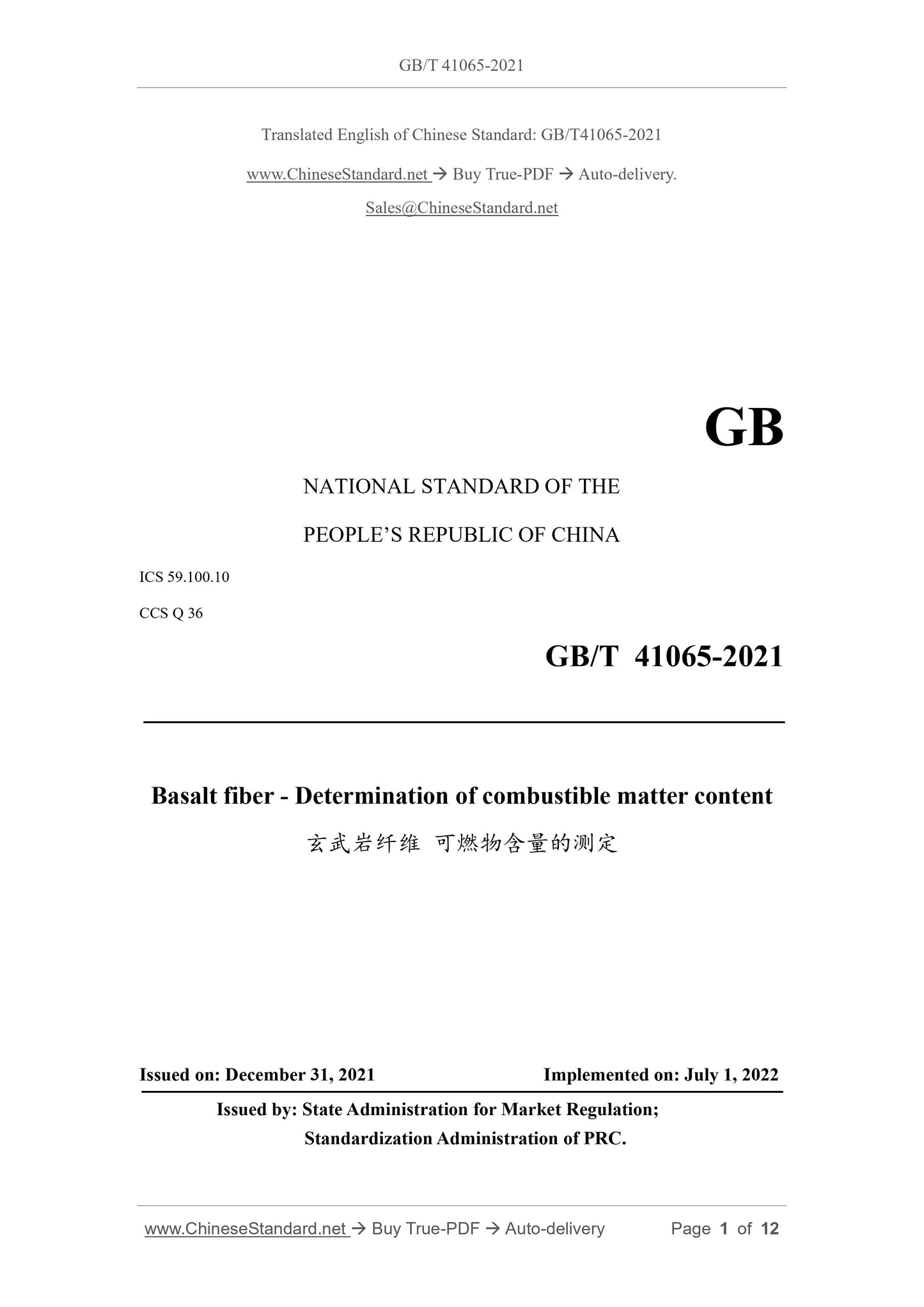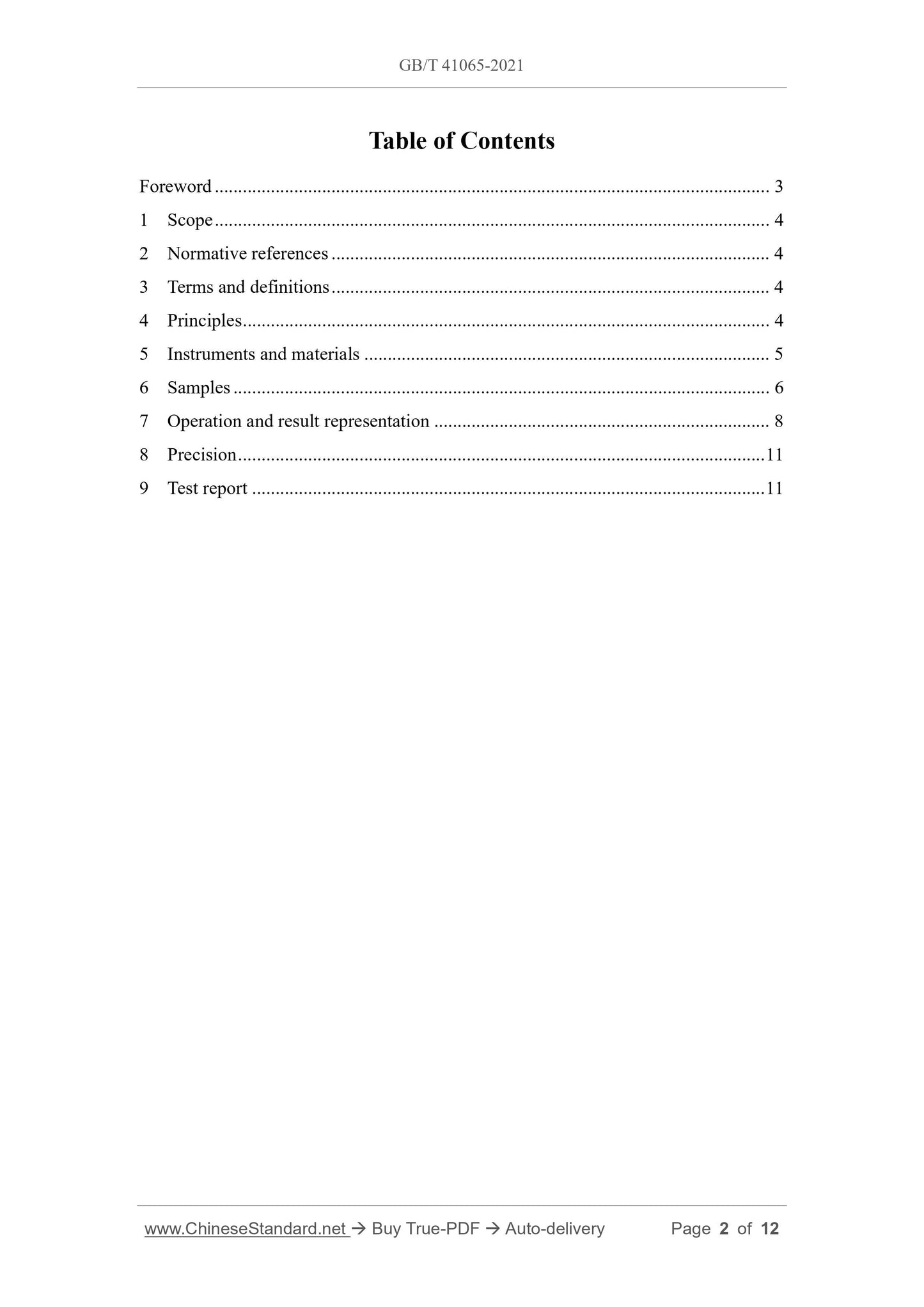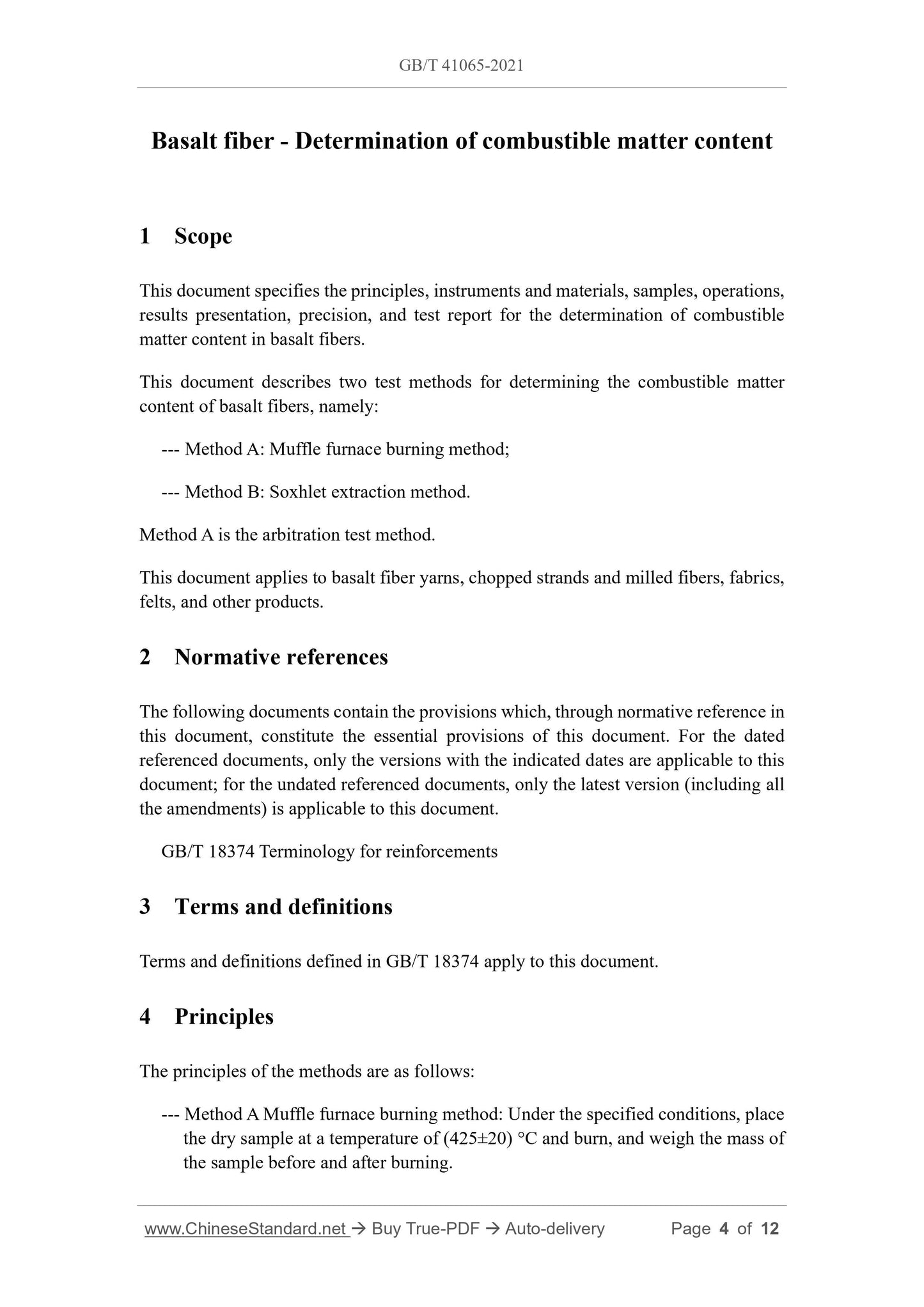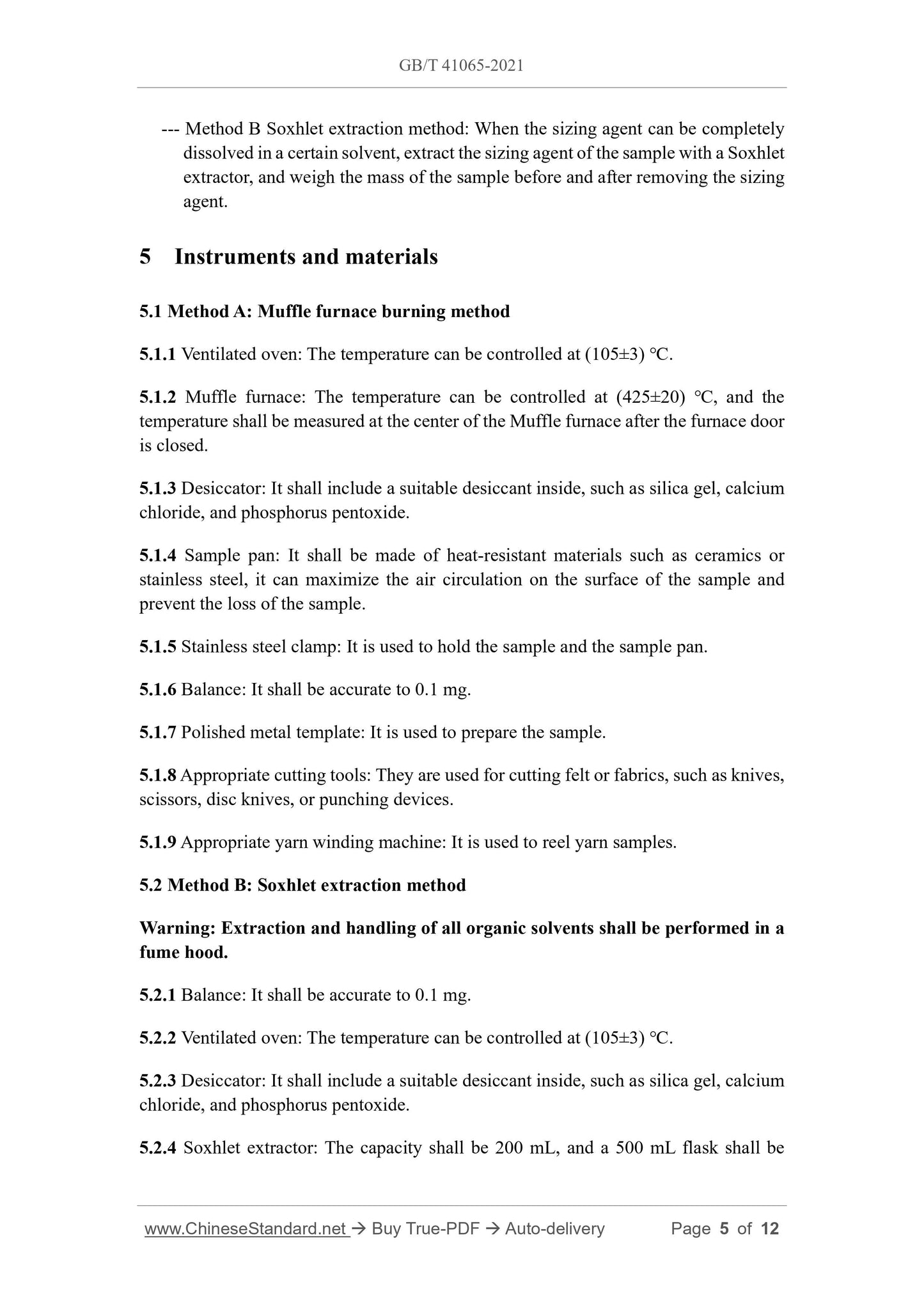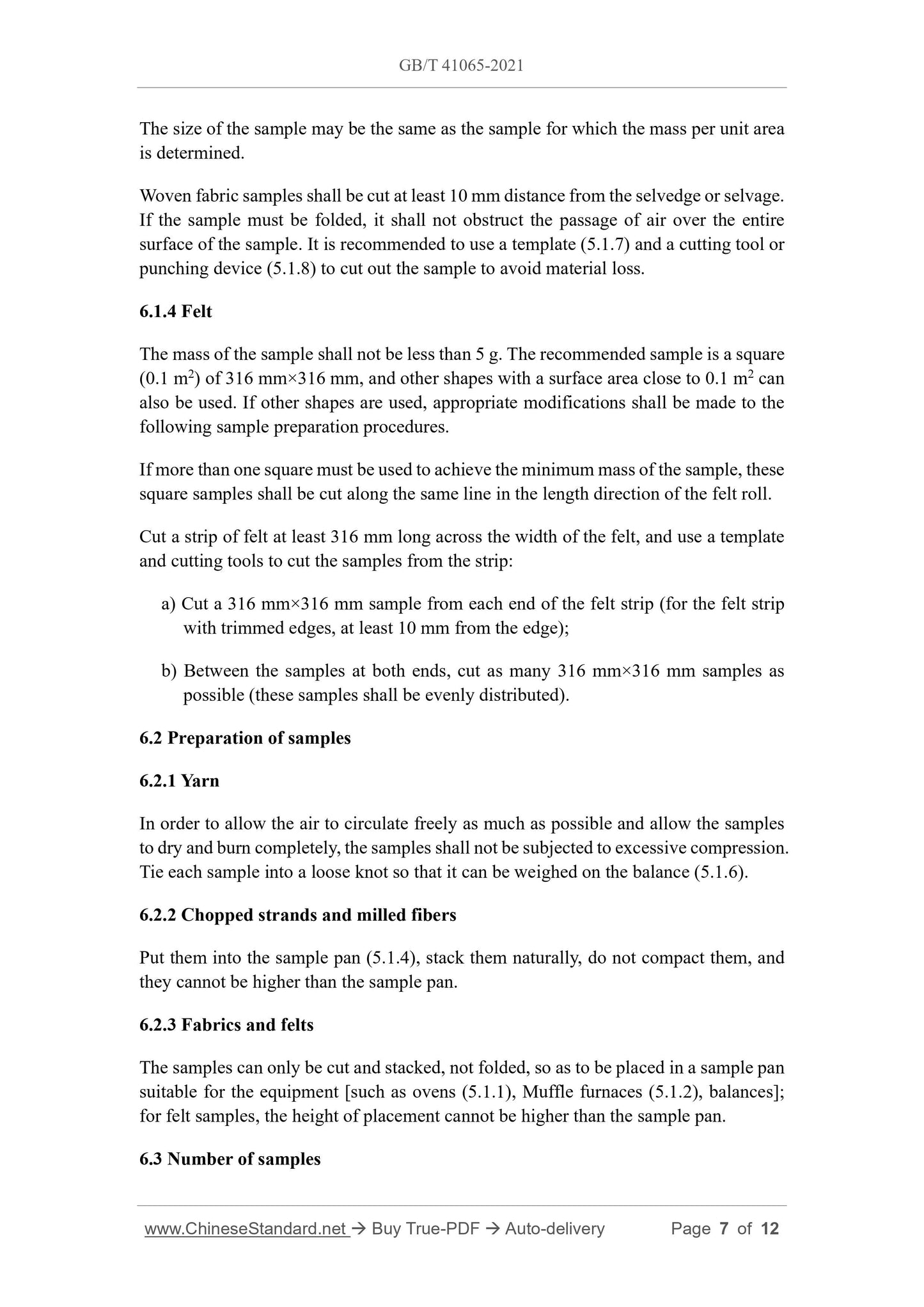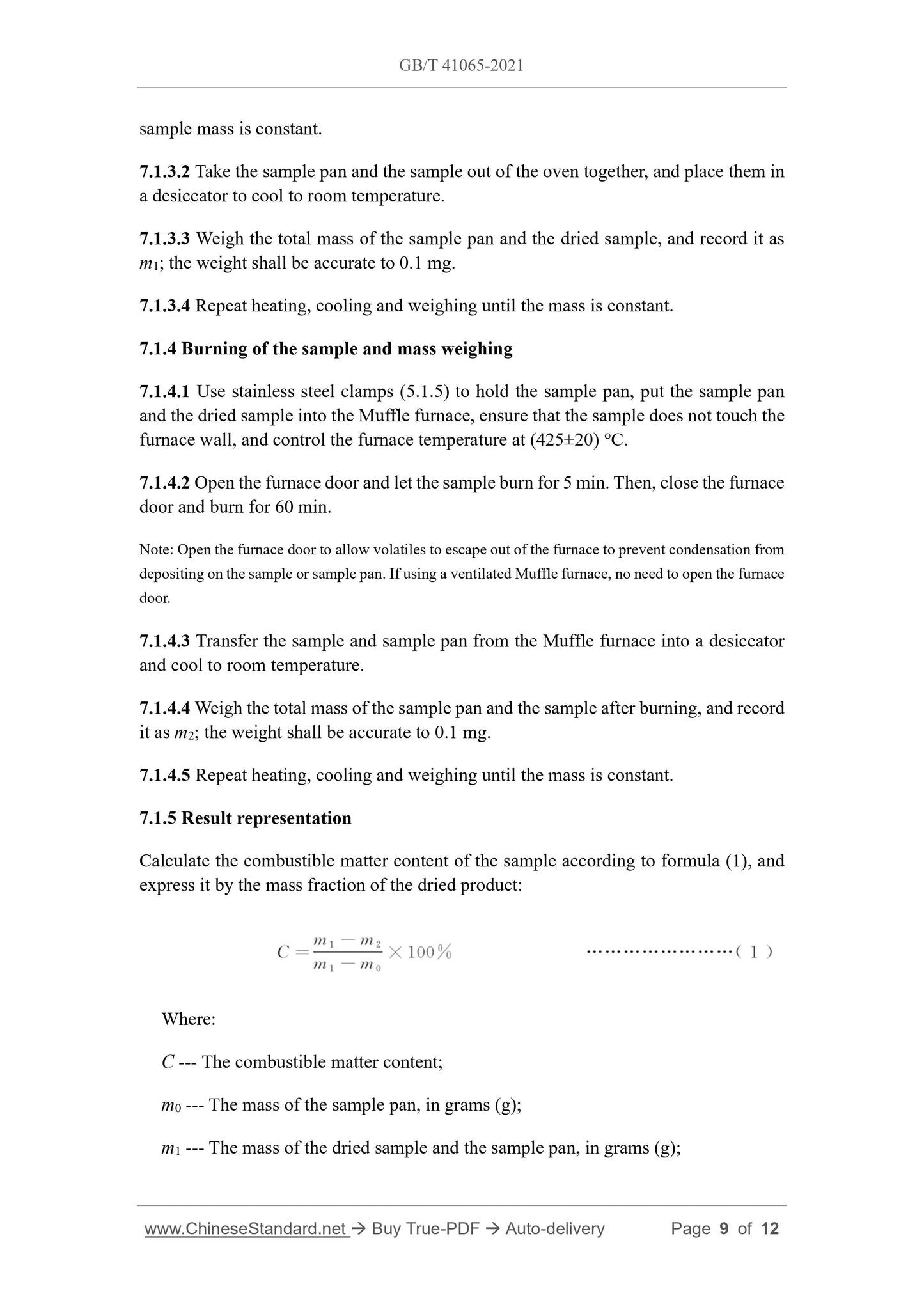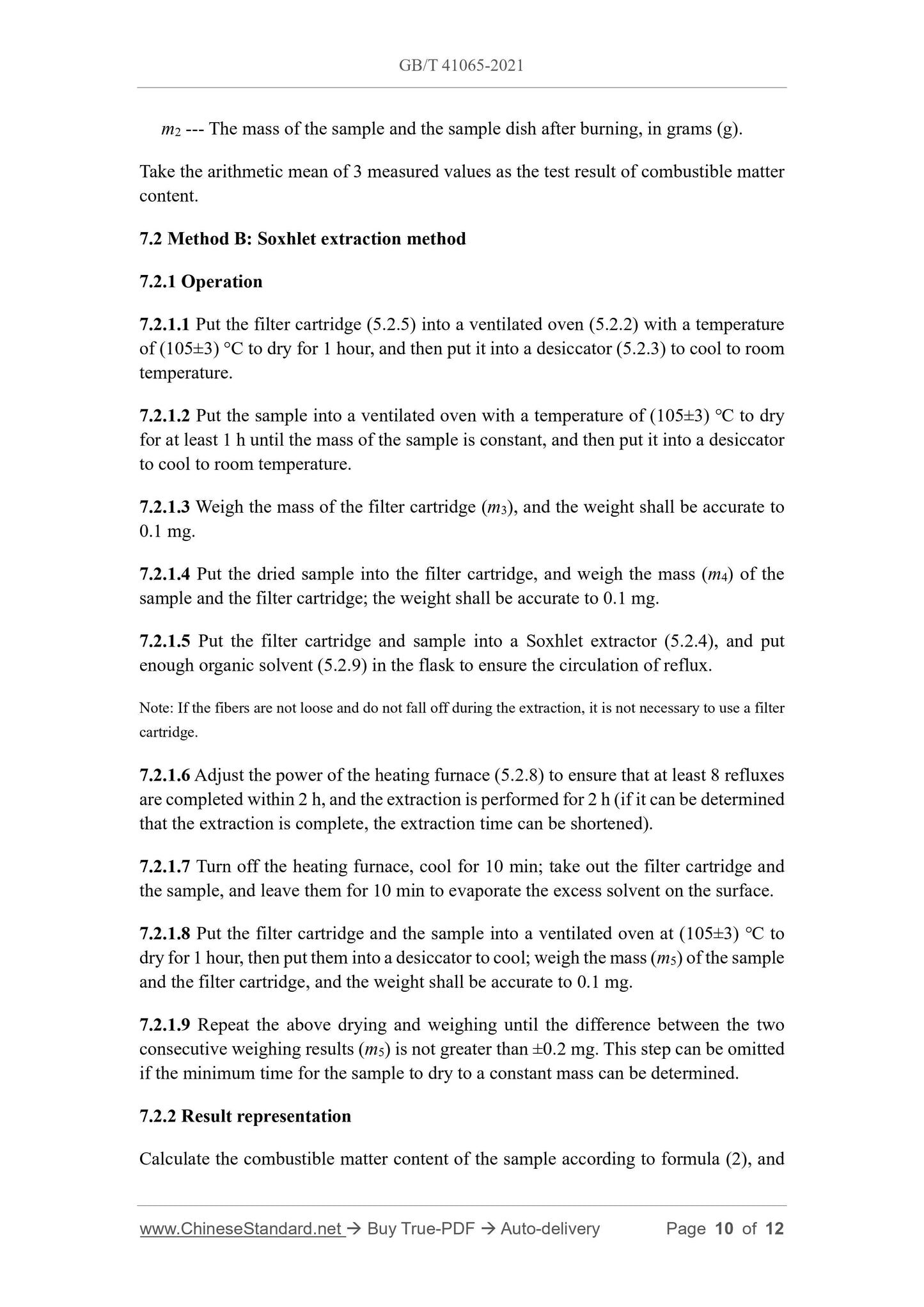1
/
of
7
www.ChineseStandard.us -- Field Test Asia Pte. Ltd.
GB/T 41065-2021 English PDF (GB/T41065-2021)
GB/T 41065-2021 English PDF (GB/T41065-2021)
Regular price
$170.00
Regular price
Sale price
$170.00
Unit price
/
per
Shipping calculated at checkout.
Couldn't load pickup availability
GB/T 41065-2021: Basalt fiber - Determination of combustible matter content
Delivery: 9 seconds. Download (and Email) true-PDF + Invoice.Get Quotation: Click GB/T 41065-2021 (Self-service in 1-minute)
Newer / historical versions: GB/T 41065-2021
Preview True-PDF
Scope
This document specifies the principles, instruments and materials, samples, operations,results presentation, precision, and test report for the determination of combustible
matter content in basalt fibers.
This document describes two test methods for determining the combustible matter
content of basalt fibers, namely:
--- Method A: Muffle furnace burning method;
--- Method B: Soxhlet extraction method.
Method A is the arbitration test method.
This document applies to basalt fiber yarns, chopped strands and milled fibers, fabrics,
felts, and other products.
Basic Data
| Standard ID | GB/T 41065-2021 (GB/T41065-2021) |
| Description (Translated English) | Basalt fiber - Determination of combustible matter content |
| Sector / Industry | National Standard (Recommended) |
| Classification of Chinese Standard | Q36 |
| Word Count Estimation | 8,870 |
| Issuing agency(ies) | State Administration for Market Regulation, China National Standardization Administration |
Share
